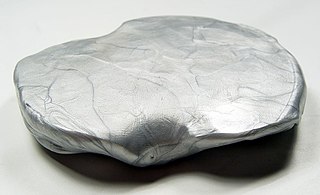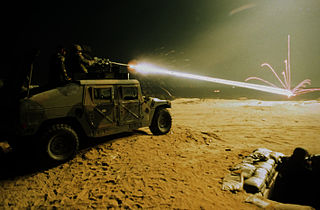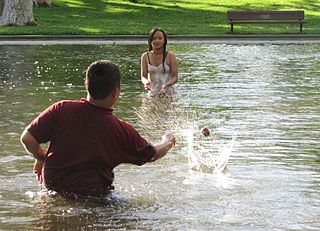
A ball is a round object with several uses. It is used in ball games, where the play of the game follows the state of the ball as it is hit, kicked or thrown by players. Balls can also be used for simpler activities, such as catch or juggling. Balls made from hard-wearing materials are used in engineering applications to provide very low friction bearings, known as ball bearings. Black-powder weapons use stone and metal balls as projectiles.

Silly Putty is a toy containing silicone polymers that have unusual physical properties. It can flow like a liquid, bounce, stretch, or break depending on the amount of physical stress to which it is subjected. It contains viscoelastic liquid silicones, a type of non-Newtonian fluid, which makes it act as a viscous liquid over a long time period but as an elastic solid over a short time period. It was originally created during research into potential rubber substitutes for use by the United States in World War II.

Wham-O Inc. is an American toy company based in Carson, California, United States. It is known for creating and marketing many popular toys for nearly 70 years, including the Hula hoop, Frisbee, Slip 'N Slide, Super Ball, Trac-Ball, Silly String, Hacky sack, Wham-O Bird Ornithopter and Boogie Board, many of which have become genericized trademarks.

Stone skipping and stone skimming are considered related but distinct activities: both refer to the art of throwing a flat stone across the water in such a way that it bounces off the surface. The objective of "skipping" is to see how many times a stone can bounce before it sinks into the water; the objective of "skimming" is to see how far a bouncing stone can travel across the water before it sinks into the water. In Japan, the practice is referred to as Mizu Kiri, which loosely translates to "water cutting". In Mizu Kiri contests, both skimming and skipping principles, as well as a throw's overall aesthetic quality, are taken into account to determine the winners.

A ricochet is a rebound, bounce, or skip off a surface, particularly in the case of a projectile. Most ricochets are caused by accident and while the force of the deflection decelerates the projectile, it can still be energetic and almost as dangerous as before the deflection. The possibility of ricochet is one of the reasons for the common firearms safety rule "Never shoot a bullet at a flat, hard surface." Ricochets can occur with any caliber, but short or round ricocheting bullets may not produce the audible whine caused by tumbling irregular shapes. Ricochets are a hazard of shooting because, for as long as they retain sufficient velocity, ricocheting bullets or bullet fragments may cause collateral damage to animals, objects, or even the person who fired the shot.

A space hopper is a rubber ball with handles that allow one to sit on it without falling off. The user can attempt to hop around on the toy, using its elastic properties to move forward.

A beach ball is an inflatable ball for beach and water games. Their large size and light weight require little effort to propel them.
Bounce or The Bounce may refer to:

A Super Ball or Superball is a toy bouncy ball based on a type of synthetic rubber invented in 1964 by chemist Norman Stingley. It is an extremely elastic ball made of Zectron, which contains the synthetic polymer polybutadiene as well as hydrated silica, zinc oxide, stearic acid, and other ingredients. This compound is vulcanized with sulfur at a temperature of 165 °C (329 °F) and formed at a pressure of 3,500 psi (24 MPa). The resulting Super Ball has a very high coefficient of restitution, and if dropped from shoulder level on a hard surface, a Super Ball bounces nearly all the way back; thrown down onto a hard surface by an average adult, it can fly over a three-story building.
Juggling practice has developed a wide range of patterns and forms which involve different types of manipulation, different props, numbers of props, and numbers of jugglers. The forms of juggling shown here are practiced by amateur, non-performing, hobby jugglers as well as by professional jugglers. The variations of juggling shown here are extensive but not exhaustive as juggling practice develops and creates new patterns on a regular basis. Jugglers do not consciously isolate their juggling into one of the categories shown; instead most jugglers will practice two or more forms, combining the varieties of juggling practice. Some forms are commonly mixed, for example: numbers and patterns with balls; while others are rarely mixed, for example: contact numbers passing. Many Western jugglers also practice other forms of object manipulation, such as diabolo, devil sticks, cigar box manipulation, fire-spinning, contact juggling, hat manipulation, poi, staff-spinning, balancing tricks, bar flair and general circus skills.
A bouncy ball or rubber ball is a spherical toy ball, usually fairly small, made of elastic material which allows it to bounce against hard surfaces. When thrown against a hard surface, bouncy balls retain their momentum and much of their kinetic energy. They can thus rebound with an appreciable fraction of their original force. Natural rubber originated in the Americas, and rubber balls were made before European contact, including for use in the Mesoamerican ballgame. Christopher Columbus witnessed Haitians playing with a rubber ball in 1495.

A tribometer is an instrument that measures tribological quantities, such as coefficient of friction, friction force, and wear volume, between two surfaces in contact. It was invented by the 18th century Dutch scientist Musschenbroek

A stress ball or hand exercise ball is a malleable toy, usually not more than 7 centimetres (2.8 in) in diameter. It is squeezed in the hand and manipulated by the fingers, ostensibly to relieve stress and muscle tension or to exercise the muscles of the hand.

In ball sports, topspin or overspin is a property of a ball that rotates forwards as it is moving. Topspin on a ball propelled through the air imparts a downward force that causes the ball to drop, due to its interaction with the air. Topspin is the opposite of backspin.

A football is the ball used in the sport of association football. The name of the ball varies according to whether the sport is called "football", "soccer", or "association football". The ball's spherical shape, as well as its size, weight, mass, and material composition, are specified by Law 2 of the Laws of the Game maintained by the International Football Association Board. Additional, more stringent standards are specified by FIFA and other big governing bodies for the balls used in the competitions they sanction.

Juggling balls, or simply balls, are a popular prop used by jugglers, either on their own—usually in sets of three or more—or in combination with other props such as clubs or rings. A juggling ball refers to any juggling object that is roughly spherical in nature.

Waterballs are water toys that are played on the water surface with players interacting with the water toy and the water in any number of play patterns. Generally players throw waterballs at varying speeds across the water and air at varying angles to get the desired skip pattern. Play is generally between players and play patterns can involve a variety of apparatus and equipment, such as special pools with goals and watercourts.

The physics of a bouncing ball concerns the physical behaviour of bouncing balls, particularly its motion before, during, and after impact against the surface of another body. Several aspects of a bouncing ball's behaviour serve as an introduction to mechanics in high school or undergraduate level physics courses. However, the exact modelling of the behaviour is complex and of interest in sports engineering.

The term kamifūsen refers to several types of paper balloons in Japanese culture. They are simple toys for children, advertising give-aways for traditional medicine companies, and illuminated flying balloons at festivals.
















